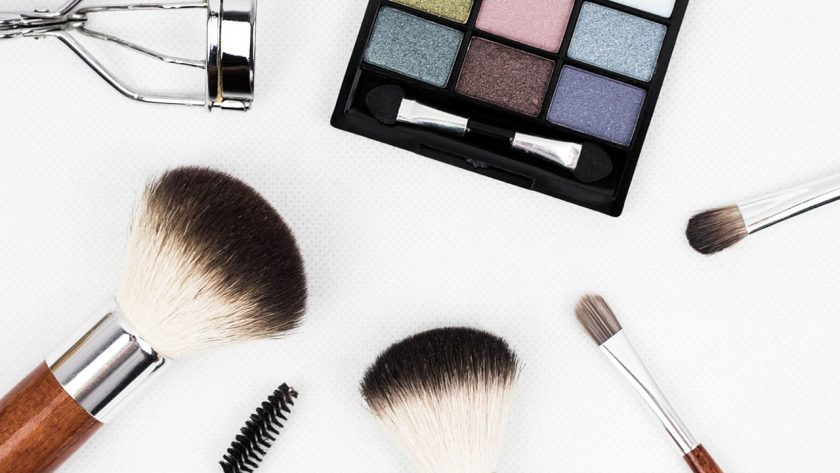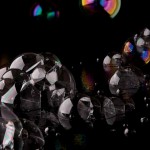This article delves into the health implications of cosmetic ingredients, offering insights from my research and helpful sources I have found. I aim to empower readers in making informed choices about skincare and makeup, exploring alternatives and understanding the rise of “clean beauty.”
Lately I have become more and more concerned about what ingredients are in my makeup. I have thrown out anything with parabens so far, and most products that contain petroleum derivative ingredients.
But there are so many different things to look out for, according to the EWG.
For those unfamiliar with the EWG: The Environmental Working Group (EWG) is a non-profit organization that focuses on environmental and public health issues, providing information and advocacy for consumers to make informed choices about products and policies. They are known for their databases and guides that assess the safety of various consumer products, including cosmetics and household items.
For example, here is one of my favorite BB creams and it’s ingredients:
| Purlisse Perfect Glow BB Cream:
Water, Cyclopentasiloxane, Titanium Dioxide, Ethylhexyl Methoxycinnamate, Butylene Glycol, Zinc Oxide, Caprylic/Capric Triglyceride, Cetyl PEG/PPG-10/1 Dimethicone, Sorbitan Sesquioleate, Dimethicone, Sodium Chloride, Beeswax, CI 77492, Stearalkonium Hectorite, Magnesium Aluminum Silicate, Phenoxyethanol, Ozokerite, Dimethicone/Vinyl Dimethicone Crosspolymer, CI 77499, CI 77491, PEG- 10 Dimethicone Crosspolymer, Cyclotetrasiloxane, Bacillus Ferment, Schisandra Chinesis Fruit Extract, Lycium Chinese Fruit Extract, Crataegus Oxycantha Fruit Extract, Gardenia Jasminoides Fruit Extract, Cornus Officinalis Fruit Extract |
At first glance, it is pretty hard to understand. That is why I really enjoy the EWG website, because you can enter in all the ingredients into a custom report, which will tell you all the ingredients they find concerning.
Here is what they deemed toxic, from worst (most toxic) to mildly toxic:
(Note: The higher the score, the worse that ingredient is)
Cyclotetrasiloxane (Scored 10/10 – WORST)
Octinoxate (Scored 7/10 – Pretty bad)
Dimethicone (Scored 4/10 – Moderately bad)
Phenoxyethanol (Scored 4/10 – Moderately bad)
Cyclopentasiloxane (Scored 3/10 – Mildly bad)
Titanium Dioxide (Scored 3/10 – Mildly bad)
Zinc Oxide (Scored 3/10 – Mildly bad)
Iron Oxides (Scored 3/10 – Mildly bad)
Lets break this down further, exploring the top 4 concerning ingredients:
Cyclotetrasiloxane:
Cyclotetrasiloxane (also called D4) is associated with environmental toxicity, persisting in aquatic organisms and wastewater streams. It is classified as an endocrine disruptor, potentially impacting human hormone function and fertility. Regulatory concerns and uncertainties about long-term health effects highlight the need for caution in using products containing D4. (Source)
Octinoxate:
Octinoxate, a common UV filter in cosmetics, may cause allergic contact dermatitis and photo contact dermatitis in some individuals. It is classified as an endocrine-disrupting compound, potentially affecting hormones, although current evidence on its impact is inconclusive. Limited research suggests potential neurological effects, but more comprehensive and up-to-date studies are needed to ascertain health risks associated with prolonged use. (Source)
Dimethicone:
Dimethicone, a silicone-based ingredient found in many beauty and skincare products, provides benefits such as a silky feel, improved texture, and skin protection. However, potential risks include the risk of drying out the skin, difficulty in washing off the protective film, clogged pores leading to breakouts, and slower cell regeneration. (Source)
Phenoxyethanol:
Phenoxyethanol is a synthetic preservative used in skincare products, derived from coal tar and ethylene oxide. Despite its widespread use, concerns exist about its safety and potential side effects. Studies suggest that it may cause skin sensitization and contact dermatitis, but reactions may vary among individuals, particularly those with eczema or contact allergies. When absorbed into the skin, phenoxyethanol is metabolized in the liver, with a significant percentage entering the bloodstream, raising concerns, especially for pregnant or breastfeeding women. While it has been found non-genotoxic and non-carcinogenic the use of synthetic preservatives like phenoxyethanol can disrupt the skin microbiome, potentially leading to issues such as dryness, eczema flares, and breakouts. (Source)
Just looking over these 4 ingredients, it leads me to believe that perhaps this product is not so good to be placing on my skin. However, so many makeup products have chemicals like these. What are we to do?
Believe it or not, there are many healthier (less toxic) types of makeup on the market. I have personally been experimenting with Bellapierre, HAN, Fitglow Beauty, and Honest Beauty. I also really like the ingredients in most of the 100% Pure brand products.
However, it is hard to replace products that you have fallen in love with, as textures in more natural products are not the same.
All in all, you personally have to decide what works for you and if you want to further investigate the ingredients in your skincare products and makeup. The reason I have looked into it further was because I had watched a toxicologist named Yvonne Burkart talk about toxins in makeup and carcinogenic effects it had on people in studies. In the video called “Cancer Is On The Rise!”- Toxicity Expert Shares The Everyday Products Linked To It, she discusses the pervasive presence of hidden toxins in everyday products, such as cosmetics and household items, detailing their links to chronic diseases like cancer, and shares insights on minimizing exposure through informed consumer choices and optimizing detoxification. (It is 99 minutes long, but a very good and eye-opening watch).
I also began to find there was research showing that within minutes, many chemicals found in makeup were detectible in our blood. Our skin absorbs them! Then our liver and kidneys try their best to process them. And sometimes when they can’t, the toxins get stored in our fat.
There is so much research I went through, it would make your head spin. But I really think the research is worth it and I highly recommend taking the time. Also, below is another thing to look out for…
The Rise of “Clean Beauty” and Greenwashing: The Cosmetic Industry’s Labeling Tactics
In recent years, there has been a growing trend towards “clean beauty,” with consumers becoming increasingly aware of the potential health hazards linked to certain cosmetic ingredients. The demand for products with natural, organic, and non-toxic formulations has given rise to a multitude of brands marketing themselves as “clean” or “green.”
However, these products are often not as clean as they come off. Greenwashing is the practice of misleading consumers by exaggerating the environmental or health benefits of a product. Some brands may use buzzwords like “natural” or “chemical-free” while the products still contain toxic chemicals.
That is why it is so important to really look at the labels and take the time to understand them.
Conclusion:
Understanding cosmetic ingredients is vital for our health if we are going to continue to use makeup. The analysis of popular makeup ingredients reveals concerns in regards to toxins. The rise of “clean beauty” is encouraging, but greenwashing makes it hard to find truly safe alternatives. All in all, makeup may never be perfect, and going makeup free is the only way to avoid all toxins. However, most people are not ready to give up makeup (me being one of them). So until then, finding safer alternatives is important.
I hope this article has been helpful for you and that it inspires you to look further into products you put on your face, skin, and hair.



